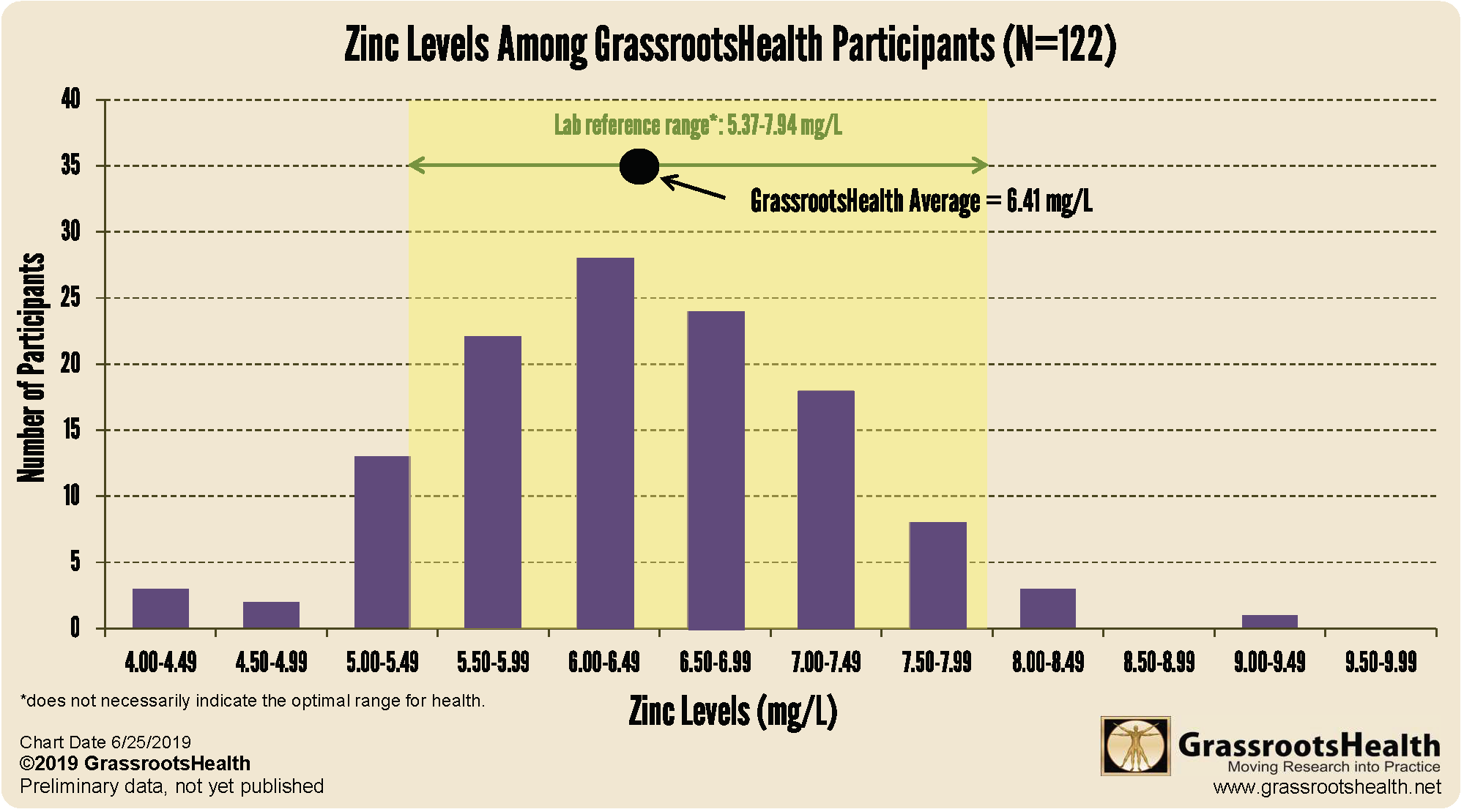Published on June 27, 2019
 Zinc is a key cofactor for approximately 3,000 proteins and enzymes in the body. It is necessary for growth and development, immune function, bone metabolism, and central nervous system function.
Zinc is a key cofactor for approximately 3,000 proteins and enzymes in the body. It is necessary for growth and development, immune function, bone metabolism, and central nervous system function.
Zinc is a mineral present naturally in a wide variety of foods, including red meat, poultry, beans, nuts, whole grains, dairy products, and fortified cereal. Zinc is also available as a dietary supplement. More information about zinc and why it is important can be found in this previous blog.
Earlier this year, GrassrootsHealth started offering a zinc test as part of the Elements Panel, which includes testing your vitamin D level along with essential elements magnesium, selenium, zinc, copper, and copper:zinc ratio, and toxic heavy metals cadmium, lead, and mercury. This test measures the amount of zinc within the red blood cells as well as within the serum, and for this reason, can be more accurate than a typical zinc test of the serum alone.
The test results for the first 122 participants who have tested their zinc levels are shown below. The average level was 6.41 mg/L which falls within the lab reference range (5.37-7.94 mg/L); this reference range indicates the range of typical results found in the population the lab serves but does not necessarily indicate the optimal range for health.
While zinc is essential to the body, the optimal range for health is not known. Excess zinc can cause nausea, vomiting, abdominal cramps, loss of appetite, diarrhea, and headaches so it’s important to identify this optimal range. At this point, we have not assessed the correlation between your tested zinc levels and other nutrient levels or health outcomes. Your ongoing participation in this project will contribute greatly to knowing what levels are optimal for health. We will continue to track this data and report any results back to you. We need 1,000 participants to have enough data to assess key outcomes. Keep up the good work!
If you would like to help sponsor others’ participation, please email jen @grassrootshealth.org and let us know!
Could your health be improved with zinc?
Be sure to know if you are getting enough zinc by testing your level with the Elements Panel! Log on to the shop (click the link below) to get your tests and see for yourself if your levels can be improved.
Make sure you track your results before and after, about every 6 months!
Click Here to Access the Shop Page
How can I track my zinc intake and levels?
To help you track your supplement use, dietary nutrient intake, and nutrient levels, GrassrootsHealth has created an online tracking system called myData-myAnswers. For each specific supplement, you can track what days you take it, how much, and many other details. You can also track your zinc intake from dietary sources and zinc levels over time. Check it out today!








